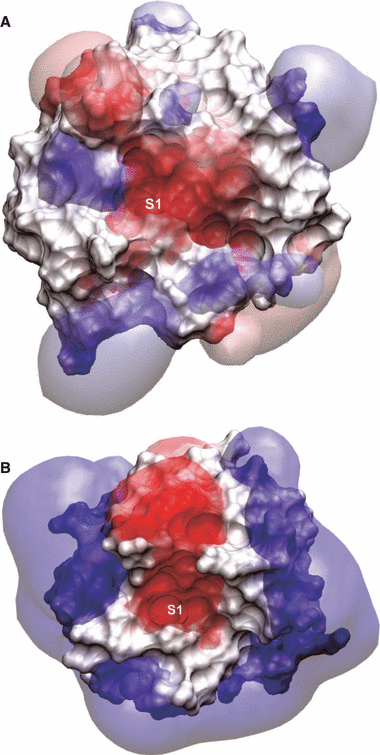NSPs in Chronic Inflammation
During the last 10 years, we have uncovered key features on ligand recognition and structure-activity relationships of specific regulators of inflammation. The early work in the group has paved our current activity which focuses on the development of inhibitors with a diagnostic or therapeutic potential in chronic inflammatory diseases.

Hovedinnhold
Neutrophil serine proteases (NSPs) Proteinase 3 (Proteinase 3, EC 3.4.21.76) and human Neutrophil Elastase (Neutrophil Elastase, EC 3.4.21.37) are therapeutic targets in a number of chronic inflammatory diseases. Neutrophil Elastase has been considered a drug target for COPD in 30 years it is only recently that Proteinase 3 has been indicated as a target for novel COPD therapy. COPD is estimated to be the third leading cause of death worldwide in 2030 but there is no drug with strong disease-modifying properties.
The specific role of each of Proteinase 3 and the Neutrophil Elastase in diseases and inflammation is only emerging and there is a need for specific substrates that can be used for in vitro and cellular assays. Rational design of specific peptides is also a natural step towards the design of druggable low-molecular weight compounds. Yet achieving specific targeting of either of these proteases is challenging as the mature forms of Proteinase 3 and Neutrophil Elastase share a high sequence identity (56%) and structural similarity. We have shown that differences between Proteinase 3 and Neutrophil Elastase in the nature of the S2, S1’, S2’ and S3’ substrate binding sites can be exploited to design specific substrates for Proteinase 3 (Hajjar et al, 2006, J Med Chem; Hajjar et al., FEBS J., 2007).
Using in silico design (MD simulations and free energy decomposition) and followed by enzymatic assays we have developed a novel FRET substrate specific for Proteinase 3 (Narawane et al., J Med Chem, 2014). Furthermore we could show that Abz and EDDnp FRET groups significantly contribute towards substrate hydrolysis by Proteinase 3.
Taking advantage of the knowledge and expertise built in the group we further designed ketomethylene-based peptidomimetic inhibitors for Proteinase 3 that show IC50 values in the low micromolar range. We found that the best inhibitor (Abz-VADnV[Ψ](COCH2)ADYQ-EDDnp) displays a competitive and reversible inhibition mechanism, and it was also found to be selective for Proteinase 3 compared to the Neutrophil Elastase. (Budnjo et al., J Med Chem, 2014).
Collaborators: Véronique Witko-Sarsat (INSERM, Cochin Institute, Paris), Bengt Erik Haug (Center for Pharmacy, University of Bergen)
Techniques: HPLC-based and fluorescence-based assays, docking, molecular dynamics simulations, free energy decomposition.
